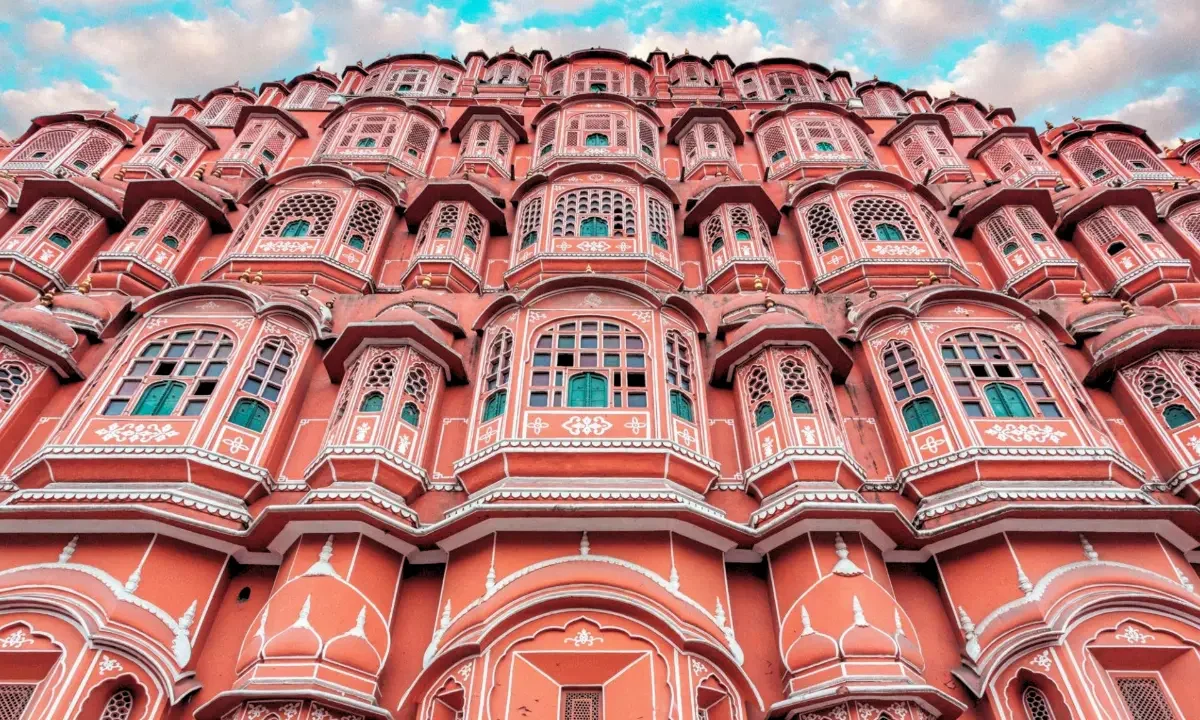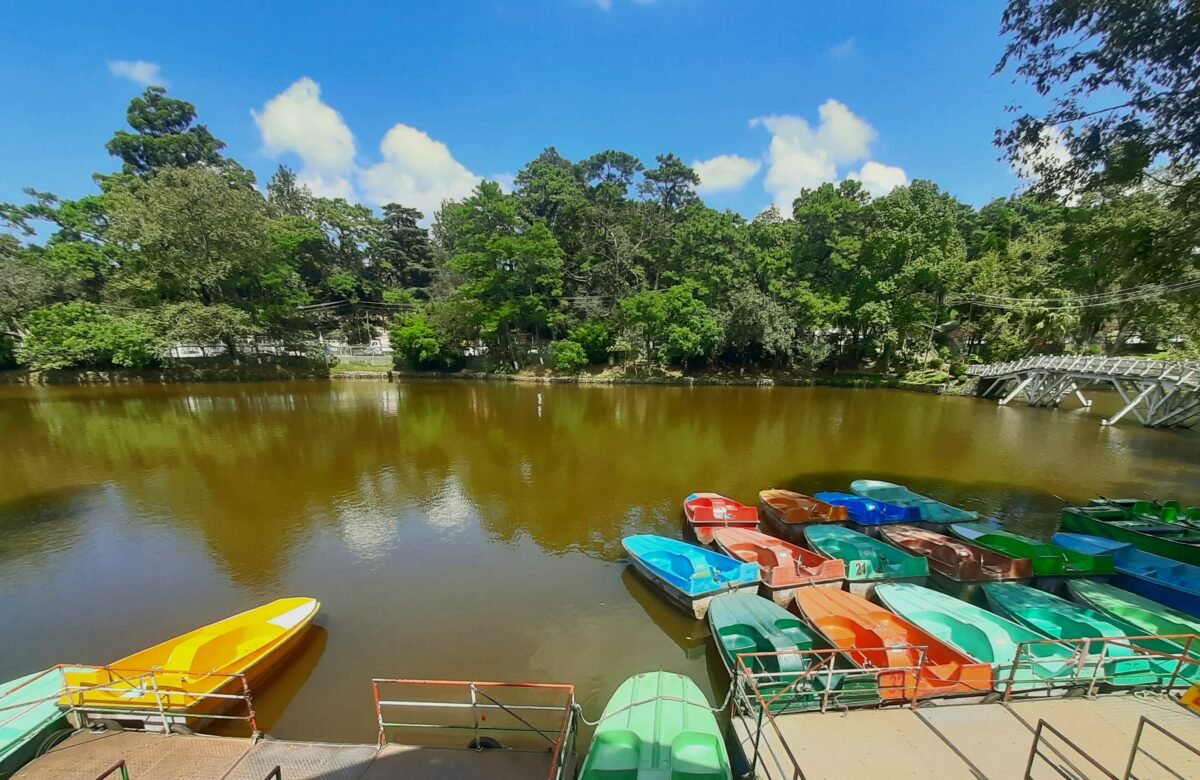
Amer Fort: 15 Surprising Unknown Facts
- Latest PostTravel
- December 24, 2022
- No Comment
- 10229
Amber Palace, also known as Amer Fort, was built in 1592 AD by Raja Man Singh, the Rajput leader of Akbar’s army. It was later enlarged and modernised by Raja Jai Sigh I. Located 11 kilometres from Jaipur proper, it serves as the city’s crowning achievement.
Located on a hillside above Maota Lake, Amer Palace is a masterpiece of Indo-Islamic design. You must see the spectacular light display at this majestic fort during your time in Jaipur. There are four inner courts near the Amber fort. Within these courtyards are a wide variety of other structures, including the Garden, Tripolia Gate, Lion Gate, Diwan-I-Aam, Sheesh Mahal, Sukh Mahal, etc., all belonging to Man Singh I.
The Amer Fort in Jaipur is the most visited monument in the city. It was built using marble and red sandstone. Rajput kings commissioned the construction of this fort, which takes many architectural cues from Mughal structures. Even if you went to Jaipur, Rajasthan, and saw everything else, your vacation would have been for nothing if you didn’t stop by the Amber Fort. This post will thus provide you with some exciting and possibly previously unknown facts about Amber Fort.
Amber Fort timings: 8 am – 5:30 pm, 6:30 – 9:15 pm (Monday to Sunday)
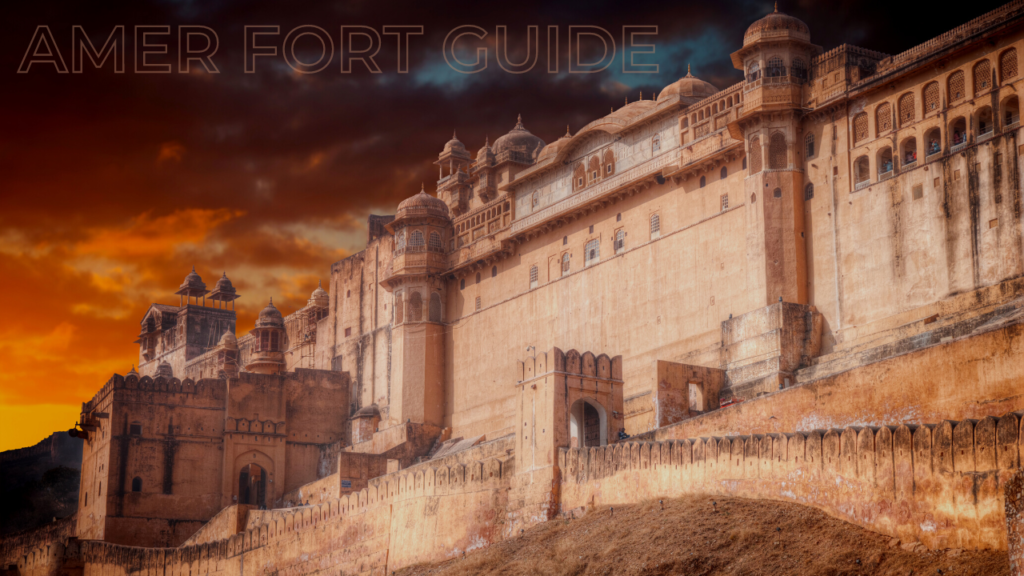
15 Surprising Unknown Facts of Amber Palace:
Fact #1 Lion’s Gate:
Amber Fort is a beautiful and historic structure located in Rajasthan, India. It took 157 years to build this fort, which is a testament to the dedication and hard work of the builders. The main door of the fort, called the Singh poll, is one of the most impressive features of the fort.

“Singh poll” refers to the lion, and “poll” means gate. Therefore, this gate is also known as Lion’s gate. It is a stunning feature, with intricate carvings and designs that showcase the craftsmanship of the builders. Overall, Amer Fort is a must-see destination for anyone interested in Indian history and culture.
Fact #2 Welcome Dhol:
In the past, whenever kings and VIPs visited Amber Fort, they were welcomed with the sound of dhols, traditional drums that are an integral part of Indian music and culture. These drums were played as a sign of respect and celebration, and their rhythmic patterns and distinct sound added to the grandeur of the occasion. Even today, the dhols used to welcome guests at Amber Fort are still present, adding to its historic atmosphere.

These drums likely hold a lot of cultural and historical significance, and they may be exciting for visitors to see and learn about while visiting the fort. Overall, the use of dhols at Amber Fort highlights the rich cultural traditions of India and the importance of music in the country’s history.
Fact #3 Diwan-E-Aam:
The Diwan-E-Aam is a standout feature of Amber Fort and is a must-see destination for visitors. Mirza Raja Jai Singh built this area, and it was used as a place where he could solve the problems of his people. The Diwan-E-Aam is known for its impressive pillars and a blend of Hindu and Muslim cultures.
There are a total of 48 pillars in this area, with 16 made of marble and 32 made of sandstone.
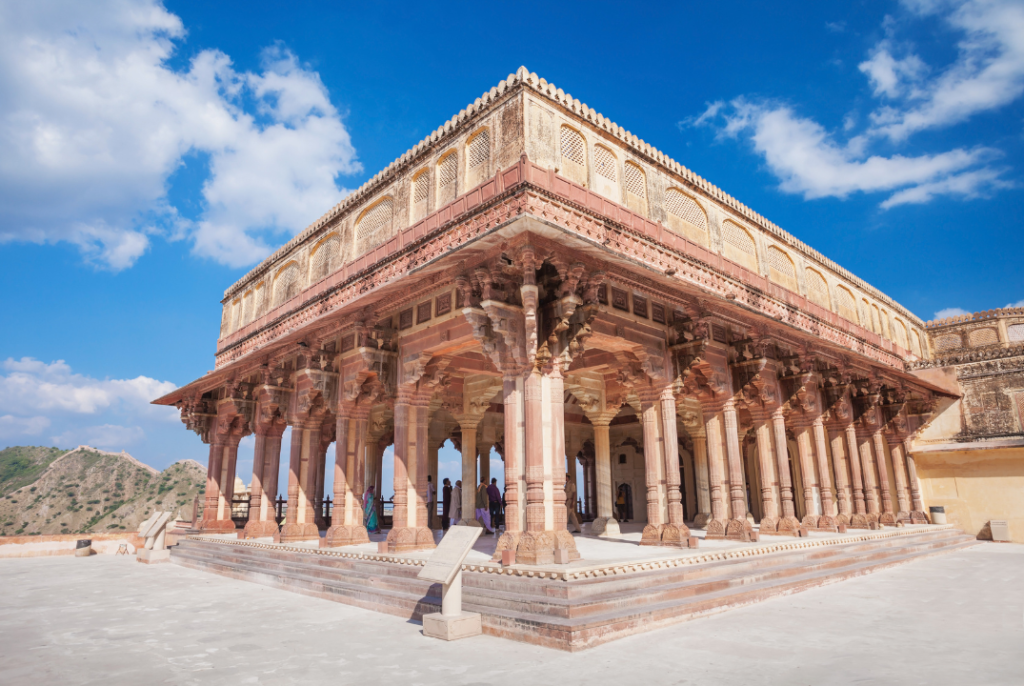
The pillars feature intricate carvings of elephants at the top, a characteristic of Hindu culture, and lotuses at the bottom, a symbol of Muslim culture. Combining these two cultural influences creates a unique and beautiful display of art and history. Overall, the Diwan-E-Aam is an exciting and essential part of Amber Fort that showcases the region’s cultural diversity.
Fact #4 Sheesh Mahal:
The Sheesh Mahal is a stunning structure in Jaipur, the capital of Rajasthan. As its name suggests, this palace is also known as Darpan Hall.
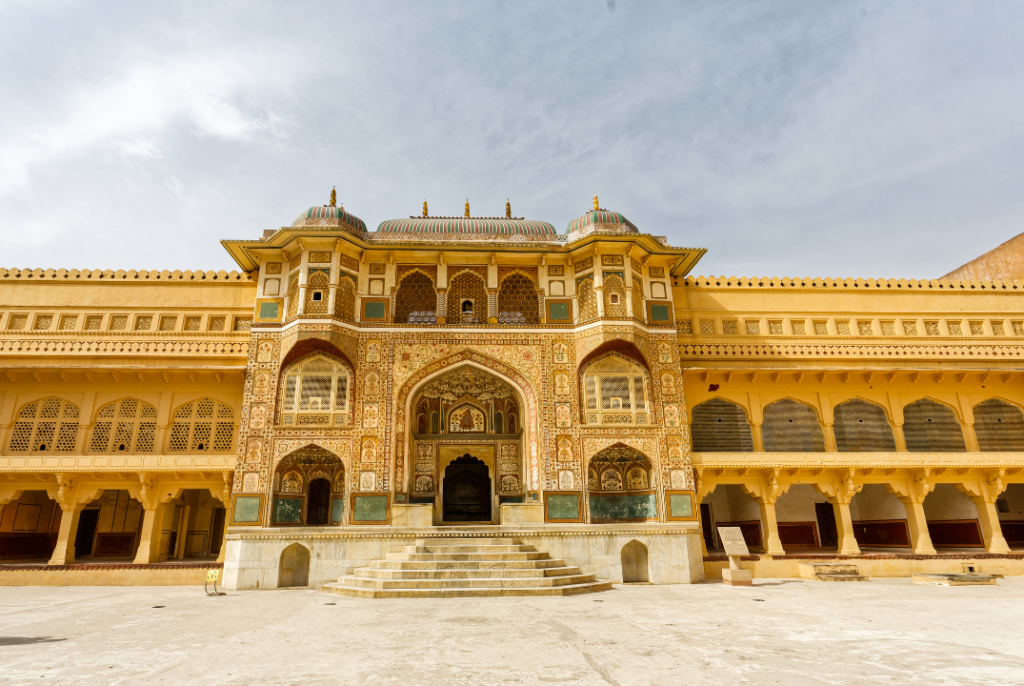
The mirrored interior of Sheesh Mahal, located inside Jai Mandir, is a stunning sight. Because of all the glass in the roof and walls, the whole castle is bathed in a warm glow. When Jaipur’s Raja Jai Singh wanted to impress his most essential visitors, he constructed this palace. In this forty-pillared Sheesh Mahal, the whole palace is illuminated by the light of a single match.
Fact #5 Saffron Farms:
In the 17th century, Raja Jai Singh, the ruler of Amber Fort, attempted to start a saffron farming operation in the region. Saffron is a highly prized spice known for its distinctive flavour and bright yellow colour. However, Jai Singh’s efforts to cultivate saffron were unsuccessful because the region’s climate was not suitable for saffron farming.
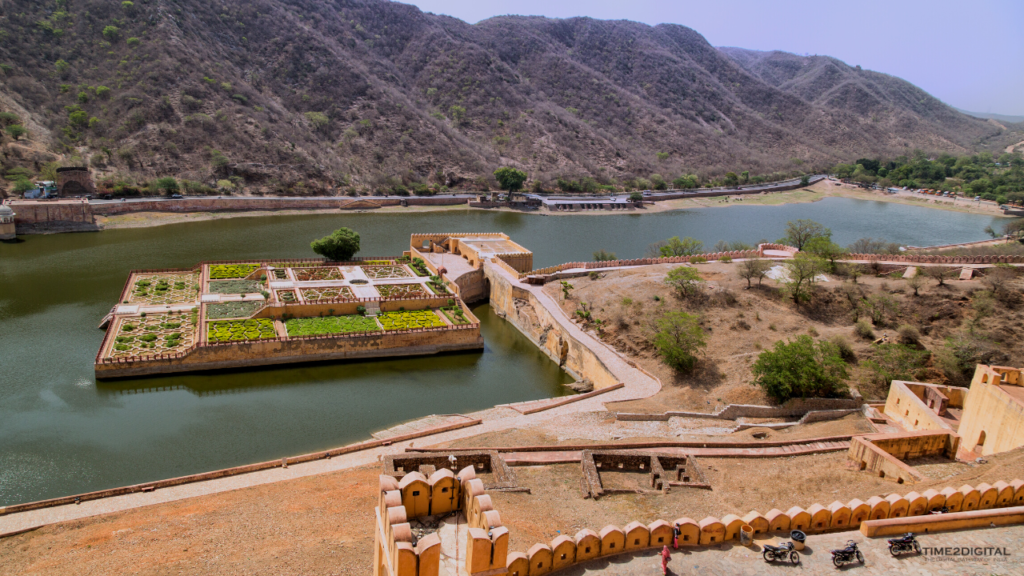
Saffron is a crop that requires cold temperatures and a sunny climate to thrive, and the conditions in Amer were not conducive to the growth of saffron. Despite this setback, Jai Singh’s attempts to cultivate saffron demonstrates his innovative spirit and willingness to try new things to benefit his kingdom.
Fact #6 Ancient Geyser:
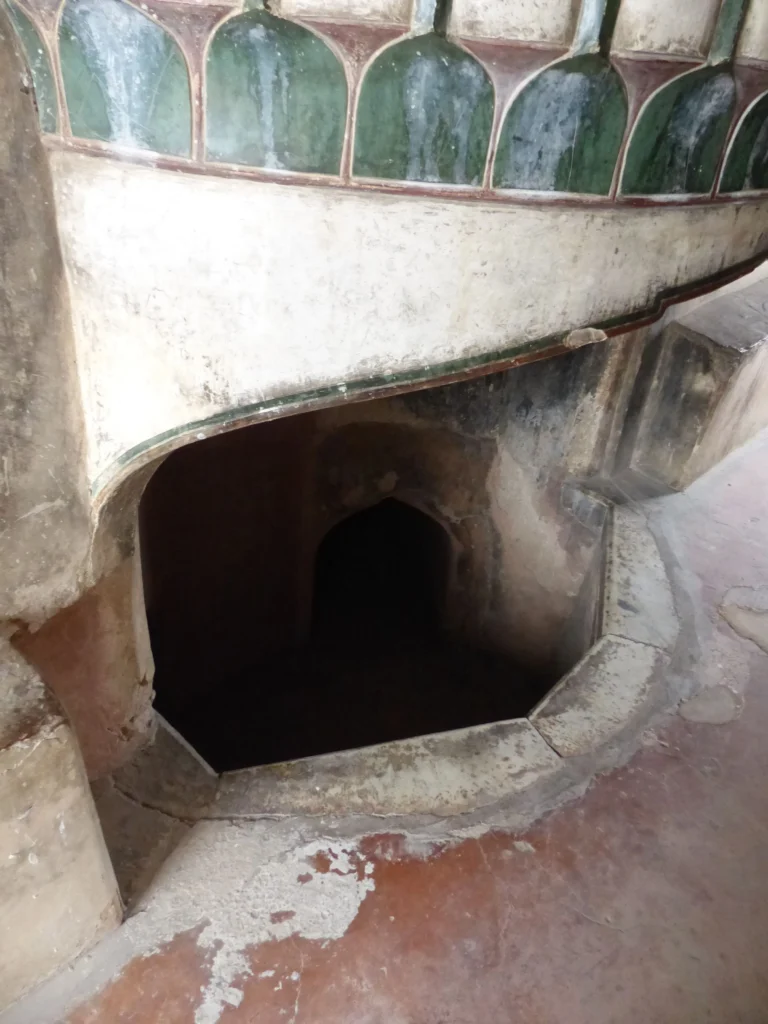
Amber Palace(Amber Palace) still has a geyser used to boil water for the kings and queens who lived there. This geyser was an innovative and sophisticated way to heat water, which is still a fascinating feature of the fort today. The geyser used a copper plate heated by burning wooden logs to boil the water in a tanker.
This method of boiling water was efficient and effective, allowing the rulers of Amber Fort to have access to hot water for bathing and other purposes. The geyser is a reminder of the advanced technologies and systems used at Amber Fort in the past. It is a testament to the ingenuity and resourcefulness of the people who lived there. Overall, the geyser at Amber Fort is a fascinating and historically significant feature worth seeing during a visit to the fort.
Fact #7 Turkish Bathroom:
Amer Fort is known for its stunning architecture and ornate decorations. One of the most impressive features of the fort is the gold water paint used on the ceilings in many areas. This paint is applied so that it entirely reflects the light when viewed from one side, creating a dazzling and beautiful effect. The use of gold water paint on Amer Fort’s ceilings adds to the fort’s grandeur and luxury, and it is a testament to the wealth and power of the rulers who lived there.
The intricate details and craftsmanship that went into creating this painting are awe-inspiring, and it is no wonder that it has become one of the fort’s most iconic and memorable features. Overall, the gold water paint on the ceilings of Amer Fort is a must-see for anyone visiting the fort and is sure to be a highlight of the experience.
Fact #8 Gold paint:
Amer Fort is known for its stunning architecture and ornate decorations. One of the most impressive features of the fort is the gold water paint used on the ceilings in many areas. This paint is applied so that it entirely reflects the light when viewed from one side, creating a dazzling and beautiful effect. The use of gold water paint on Amer Fort’s ceilings adds to the fort’s grandeur and luxury, and it is a testament to the wealth and power of the rulers who lived there.
The intricate details and craftsmanship that went into creating this painting are awe-inspiring, and it is no wonder that it has become one of the fort’s most iconic and memorable features. Overall, the gold water paint on the ceilings of Amer Fort is a must-see for anyone visiting the fort and is sure to be a highlight of the experience.
Fact #9 Diwan-E-Khaas:
One of the Amber Palace attractions is the Diwan-i-Khas or the Hall of Private Audience. Constructed during the Mirza Raja Jai Singh (1621-67 A.D.), it was also called Jai Mandir and Sheesh Mahal or the Glass Palace because of its beautiful mirror glasswork. The Raja met his special guests here, like envoys from other rulers.
The upper part of the Diwan-i-Khas is known as Jas Mandir and is spell-binding in the intricate floral designs with glass. The hammams or baths are located north of Jas Mandir.
The palace was kept cool in the summer by covering its arched openings with screens woven with the roots of the aromatic grass called Khas. The screens were moistened periodically with water. The air passing through the screens was thus cooled and carried the fragrance of the grass into the palace chambers.
In front of the Sheesh Mahal is a partnered little garden in the classic Mughal pattern called Chārbāgh or Four Gardens. Facing the Sheesh Mahal is Sukh-Niwās (Pleasure Palace), Raja’s private apartments where he retired to rest.
Fact #10 Wheelchair:
In the past, the queens at Amer Fort often wore a large amount of jewellery, which could be cumbersome. To make it easier for the queens to move around the palace, a wheelchair was built for them to use whenever they wanted to visit different areas of the fort. This wheelchair was likely a luxurious and convenient way for the queens to get around, allowing them to easily access different parts of the palace while still wearing elaborate jewellery.
Today, the wheelchair used by the queens at Amer Fort is still preserved at the fort, and it is a fascinating historical feature that visitors can see while touring the fort. It reminds the opulence and luxury enjoyed by the rulers of the fort in the past. It is a testament to the ingenuity and resourcefulness of the people who lived there.
Fact #11 Air Conditioner:
An air conditioning system was developed using water to keep the palace at Amer Fort cool and comfortable. This system worked by turning the windows cold with water, which caused the temperature inside the palace to drop. To prevent the cold breeze from escaping, the palace doors were covered with a flower called Khas Khas, which effectively blocked the cold wind from going out.
This innovative air conditioning system effectively kept the palace comfortable in Rajasthan’s hot climate, demonstrating the ingenuity and resourcefulness of the people who lived at the fort. Today, the air conditioning system at Amer Fort is a fascinating historical feature that offers a glimpse into how people in the past tried to stay relaxed and comfortable in hot weather.
Fact #12 Queen’s swing:
A swing was also installed at Amer Fort for the enjoyment of the queens who lived there. This swing was held up by four hooks and was likely a place of relaxation and enjoyment for the queens. To add to the convenience and luxury of the swing, a mirror was placed at the centre so that the queen could see her reflection while swinging.
This allowed the queen to enjoy the swing and simultaneously keep an eye on her appearance. The swing at Amer Fort is a fascinating historical feature that offers a glimpse into the lifestyles and leisure activities of the rulers. It is a reminder of the opulence and luxury that the queens of the fort enjoyed, and it is likely a feature they would have greatly appreciated.
Fact #13 Mansingh Palace:
The Mansingh Palace is the oldest part of Amer Fort and is a visitor’s must-see destination. This palace was built by King Mansingh and took 25 years to complete. It was designed to be a luxurious residence for King Mansingh’s 12 queens, and he built separate rooms for each queen to ensure privacy and comfort.

The Mansingh Palace is a testament to the wealth and power of King Mansingh and his queens, and it is an impressive example of the grandeur and opulence that was present at Amer Fort in the past. Today, the Mansingh Palace is a fascinating historic site that offers a glimpse into the lives of the rulers who lived at the fort. Its ancient architecture and ornate decorations will highlight any visit to Amer Fort.
Fact #14 Secret Way:
King Mansingh’s room at Amer Fort was connected to the rooms of his 12 queens via a secret passageway. This passageway allowed the king to move between the rooms of his queens without being seen, which ensured that none of the queens knew when the king was visiting them.
This arrangement likely helped prevent conflicts and jealousy between the queens, as they would not have known when the king was with another queen. The secret passageway at Amer Fort is a fascinating historical feature that offers a glimpse into how the rulers of the fort tried to maintain harmony and avoid conflicts. The secret passageway likely was a highly valued and closely guarded feature of the fort, and it would have played an essential role in the daily life of King Mansingh and his queens.
Fact #15 Transgender:
It is inaccurate to say that all the soldiers at the Mansingh Palace at Amer Fort were transgender. While there may have been transgender individuals among the soldiers who served at the palace, it is not appropriate to make generalizations about the identities or experiences of all of the soldiers based on a single characteristic. It is essential to respect all people’s diversity and individuality and avoid making assumptions or stereotypes about individuals based on their appearance or identity.
Thank you for being so interested in our content! We are glad that you enjoyed learning about the exciting and unique features of Amer Fort and its rich history. If you are interested in reading more about similar topics, check out our previous article on the Victoria Memorial. The Victoria Memorial is another beautiful historical site in India that can capture your imagination and curiosity. If you want to receive notifications about new articles and content similar to this article, you can subscribe to our newsletter on Time2Digital.



